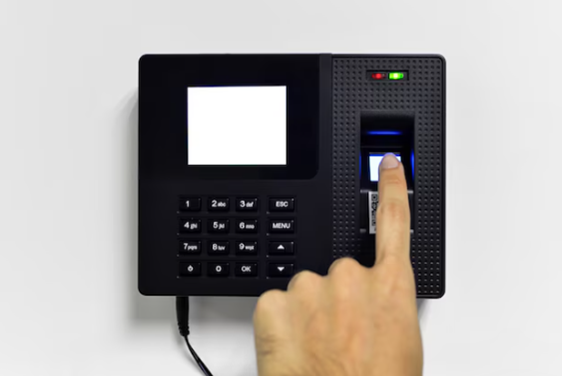Biometric Machine Installation
Biometric machine installation involves setting up hardware and software to capture and analyze unique biological traits for identification and access control.

Benefits of biometric machine installation
- CENTRALIZED DATA
- REAL TIME DATA
- NO PROXY PUNCHING
- LOW COSTING
- NO MANIPULATION
- ERROR FREE PAYROLL CALCULATION
Key steps in the installation process:
- Hardware Installation
- Software Installation
- Device Configuration
- Employee Enrollment
- Testing and Verification
- User Training
Contact Us For Biometric Machine Installation
Frequently Asked Question
Biometric machines are devices that use biometric data, such as fingerprints, facial recognition, or iris scans, to identify individuals. They are used in a variety of applications, including access control, time and attendance tracking, and law enforcement.
Biometric machines work by capturing a person's biometric data and comparing it to a stored template. If the data matches the template, the person is identified.
Fingerprint scanners: Fingerprint scanners are one of the most common types of biometric machines. They are relatively inexpensive and easy to use.
Facial recognition systems: Facial recognition systems are becoming increasingly popular. They are more accurate than fingerprint scanners, but they can be more expensive.
Iris scanners: Iris scanners are the most accurate type of biometric machine. They are also the most expensive.
Facial recognition systems: Facial recognition systems are becoming increasingly popular. They are more accurate than fingerprint scanners, but they can be more expensive.
Iris scanners: Iris scanners are the most accurate type of biometric machine. They are also the most expensive.
The cost of installing a biometric machine will vary depending on the type of machine, the number of users, and the complexity of the installation.